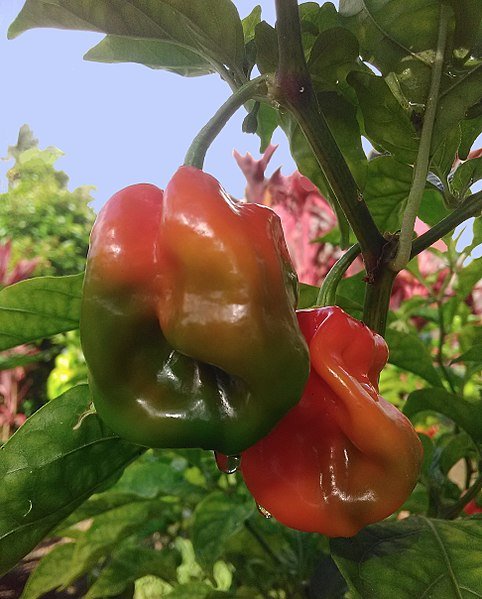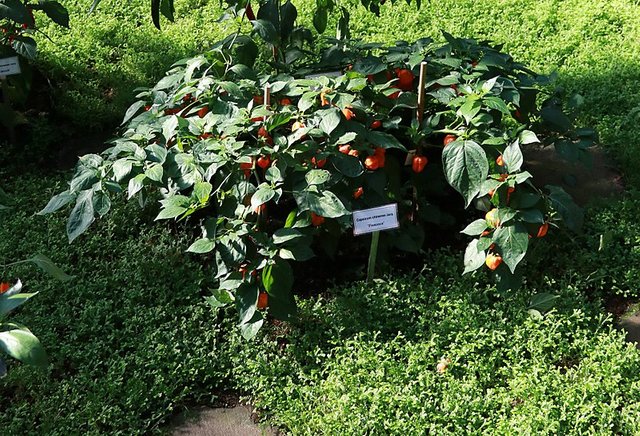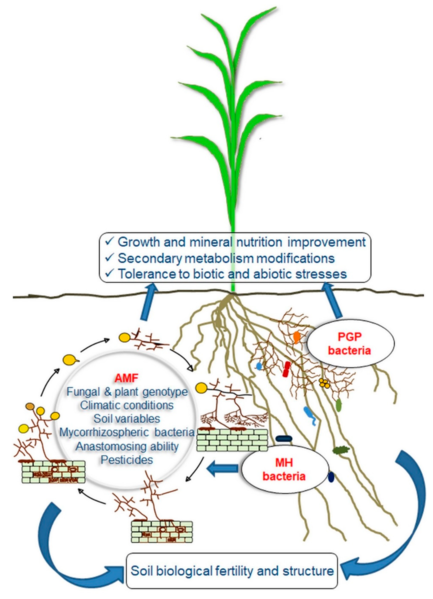▶ Abstract
Today we will talk a little bit about the ecological, agricultural and social balance of the agricultural production of the NC Chili crop: Capsicum chinense, this crop of the biannual plants group is one of the most demanded vegetables in the world, therefore commercially it is managed as an annual.


▶ The cultivation of NC chili: Capsicum chinense, is in great demand in the world, for its high gastronomic value and because it is one of the vegetables that can be grown on a small scale, with low levels of technification and, nevertheless, with a high supply of synthetic fertilizers and pesticides, this last topic is a behavior carried out by the agricultural sector, and has been generating problems in soil contamination and health problems in humans.
The high supply of synthetic fertilizers and pesticides is done with the objective of increasing the production of agricultural crops to supply world consumption demand, without taking into account other forms of production that are ecologically sound, socially just and economically profitable. To reverse this reality, it is necessary to develop strategies that favor greater biodiversity and complex biological interactions that favor a more balanced agriculture.

▶ Likewise, in addition to favoring greater biodiversity and biological interactions, it is necessary to optimize synergies that promote natural processes or ecosystemic services that dramatically minimize external subsidies and economic, energy and ecological costs.
To a large extent, achieving the sustainability of the NC chili bell pepper crop: Capsicum chinense, requires many scientific battles to be fought, and there is currently a growing interest in finding the appropriate balance between agricultural production of this important horticultural crop.

▶ These models should be oriented under economic growth and natural environment health approaches, favoring interesting advances in management strategies that promote functional biodiversity in the soil and above ground.
Among the alternatives that are already being implemented to maintain a balance that promotes functional biodiversity in the soils where NC chili is grown: Capsicum chinense, is the use of fungi - AMF

▶ Arbuscular mycorrhizal fungi capable of forming symbiosis with most plants are called AMF. These fungi are considered one of the most ecologically important soil organisms, not only because thanks to them plants, the first link in the food chain, can colonize the terrestrial environment, but also because of the multiple direct benefits they offer to the host plant and to the structure and health of the soil.
Among the indirect benefits that arise from the use of arbuscular mycorrhizal fungi (AMF) in the cultivation of NC chili: Capsicum chinense, is the high beneficial and functional biodiversity that is created under these conditions, whose biological services, in turn, are key to the functioning of natural and humanized ecosystems.
▶ Conclusion
The functional biodiversity that is activated when using arbuscular mycorrhizal fungi (AMF) in the soil, in addition to the organic contribution generated by the decomposition of leaf litter and root exudates, among other reasons, is greater in the rhizosphere than in the soil away from the root, these arbuscular mycorrhizal fungi release exudates rich in organic compounds, which constitute a source of nutrients, favoring the presence of a microbial community that provides key biological services in the biogeochemical cycling of nutrients, protection against pathogens, secretion of growth regulating hormones, enzymatic activity, among other physiological actions that act positively in the ecological, agricultural and social balance of the agricultural production of the NC Chili crop: Capsicum chinense.
NOTE: Reference material.
-The Role of Mycorrhizal Fungi in Pepper (Capsicum annuum) Production
-Effects of arbuscular mycorrhizal fungi on Capsicum spp.
≕ I invite you to stay tuned and read my next contribution ≔
PS: This article has been published from the GEMS community